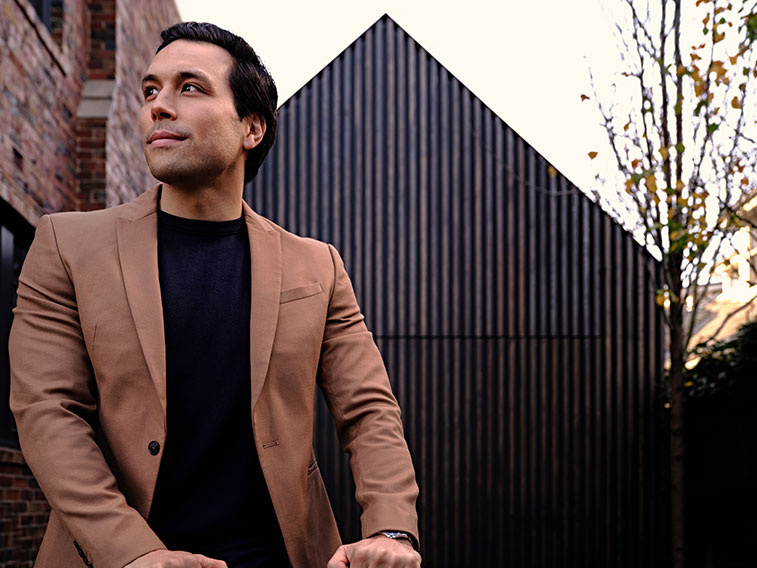A private sector improvement to support growth


Insight
One in 10 Australians has moved during the pandemic, with many leaving capital cities for greener pastures. Here, the behavioural economist Dean Pearson explains what this means for house prices in 2022.

Data from the Australian Bureau of Statistics shows that capital cities had a net loss of 11,800 people in the March quarter – the largest quarterly net loss on record. In the 12 months prior to April 2021, Victoria lost 42,900 people, New South Wales reported a modest growth of 11,700 people (this was before the state’s extended lockdown, which began in June) and Queensland gained 43,900 residents. With international border closures putting a halt to overseas migration at the same time, Australia’s population growth is slowing to a near standstill.
It remains to be seen whether this drift away from the capitals is permanent. As life returns to some sort of normality, employment opportunities and amenities in the major cities may entice people to return. That said, we know that when people experience change for the better, it can be extremely difficult to persuade them to go back to something they perceive as less desirable. Indeed, NAB research suggests that almost one in 10 Australians have moved within their own state or territory, or to another one, because of Covid-19 and are not planning to return.
This presents a real opportunity for certain regional areas to become greater hubs of economic activity and to encourage more Australians to live in them long-term. That said, there may be significant challenges in terms of land use and infrastructure planning, most notably in South East Queensland.
NAB asked those who had moved, or planned to move, what prompted their decision. Four in 10 said it was for “lifestyle” reasons (this response was particularly popular with those in South Australia and Queensland). Around three in 10 cited “wellbeing” or “employment” and just over one in four wanted to be closer to family and friends. Three in 10 of those surveyed said Covid-19 played a key role in their decision.
Where we live can have a real impact on our wellbeing. Around seven in 10 Australians told us that they currently live in an area or region they really want to be in, with four in 10 having managed to purchase property there. Queensland and Western Australia had the greatest number of people who’d purchased property in their desired location; NSW had the smallest.
According to about half of those surveyed, the most important considerations when deciding where to buy are good local shopping, restaurants and other amenities, plus the size of the property. Other key drivers (identified by four in 10 people) were the amount they were prepared to borrow, their ability to buy a house rather than an apartment, the size of the land and public transport. With more people now working from home, almost one in five Australians highlighted the importance of having a study or work area, or the opportunity to live in a regional area. Apartment living (rather than a house) was a key factor for fewer than one in 10 Australians.
The housing market has proven remarkably resilient throughout the pandemic, despite lockdowns in our two largest capitals and the sudden slowing of population growth. In part, that’s thanks to low interest rates, the federal government’s HomeBuilder program, a range of incentives from the state governments and a labour market that’s performed better than expected. That said, house price growth has recently eased (though it remains strong) and market activity has slowed, while construction and loan approvals have dropped.
NAB Economics has revised up slightly its forecast for dwelling prices in 2021, based on stronger-than-expected outcomes in recent months, and we’ve made a small upgrade to our expectations for the fourth quarter and early 2022. Overall, that means a strong run for house prices in 2021, but we can expect a sharp slowing in 2022 as the impact of lower interest rates fades and affordability constraints begin to bind.
A survey conducted in the third quarter shows that the number of Australians who think now is a good time to buy a home has fallen for the third consecutive quarter, to just 25% (at the same time last year, 44% said it was a good time to buy).
Looking at individual states and territories, we see that the Australian Capital Territory and Queensland buck the trend, with 28% of those surveyed in the ACT saying that now is a good time to buy a home, compared with 24% in the second quarter; in Queensland, the figure was 26% compared with 23%. In other states, the numbers fell quite sharply, including WA (26% vs 36%), SA (25% vs 35%) and Tasmania (17% vs 25%).
The number of respondents who thought it was a good time to buy an investment property also moderated, to 23% (down from 25% in the second quarter and 31% at the same time last year). But again Queensland bucks the trend, with 25% believing it was a good time to buy an investment property, up from 22% in the second quarter. The number of respondents who intended to buy an investment property in the next 12 months was highest in the NSW and the ACT (12%) and lowest in Tasmania (4%).
Even though house price growth is expected to slow sharply next year, the number of Australians who intend to buy a home in the next 12 months has fallen slightly, to 13% (compared with 14% in the second quarter). Those intending to buy investment property is unchanged at 9%. By state, the number of people who planned to buy a home was highest in the ACT (18%), VIC (15%) and NSW (14%), and lowest in Tasmania (6%).
Looking at the data, it seems that the pandemic has reinforced the value Australians place on their home. For many, it is not only their most significant asset, it also satisfies an innate desire for safety and security. If nothing else, the last two years have given us a chance to reassess where we want to live and what we prize most.
© National Australia Bank Limited. ABN 12 004 044 937 AFSL and Australian Credit Licence 230686.